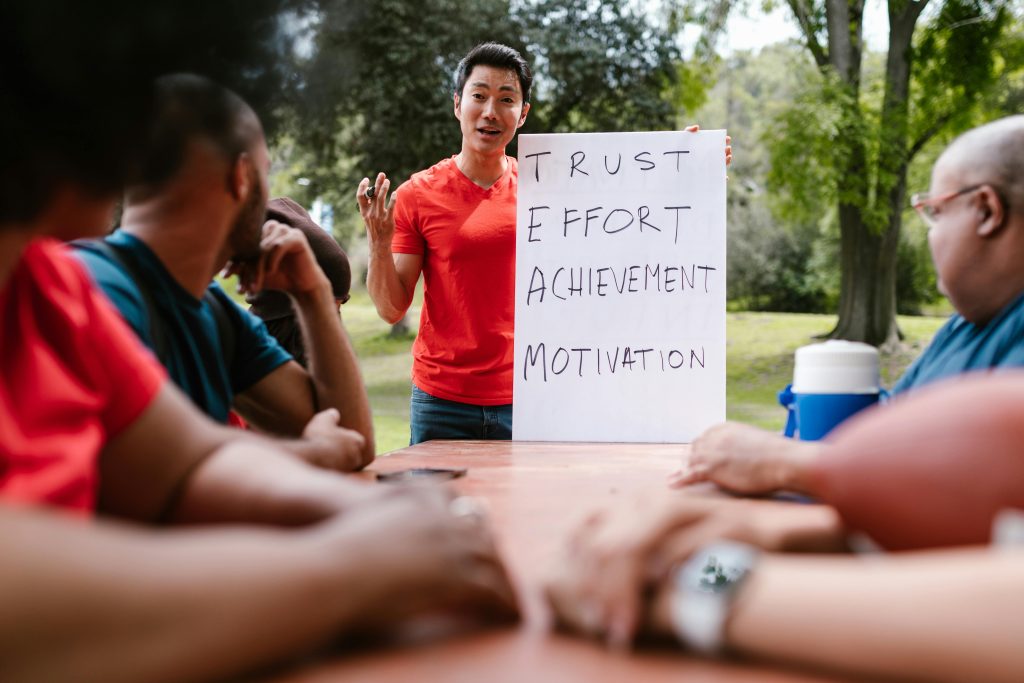Meetings are essential, but let’s face it: most of them are far from effective. They often drag on, feel unnecessary, and leave participants frustrated, wondering why they were even there. The good news? You can turn this around. In this blog post, I’ll show you exactly how to cut meeting times in half and make them significantly more productive with just a few simple changes.
This post is part of a larger series called The Leadership Toolkit: Foundations of EPIC Leadership. In this series, we’re sharing practical tools and strategies to help leaders like you improve your skills and run high-performing teams. Leadership isn’t just about big-picture vision—it’s about mastering the everyday processes, like meetings, that either build or break trust, productivity, and team morale.
Let’s dive into one of the most overlooked but critical aspects of leadership: running meetings that actually work.
The Pain of Bad Meetings
If you’ve ever sat through a bad meeting, you already know how much they can waste time and energy. The common pitfalls of ineffective meetings include:
- Lack of Purpose: There’s no clear reason for the meeting, leaving everyone confused and disengaged.
- No Structure: Meetings without an agenda tend to drift, leading to rehashed conversations or unresolved issues.
- Too Long and Unfocused: Why do so many meetings default to an hour? Often, the actual business could have been handled in 15 minutes.
- Irrelevant Attendees: People who don’t need to be there end up zoning out or checking their phones.
- People Speaking Just to Be Heard: We’ve all seen it—someone chimes in just to seem involved, derailing the conversation.
- No Clear Takeaways: The meeting ends, but no one knows what to do next. This often leads to confusion and even more meetings to sort it all out.
Sound familiar? The great news is that you don’t have to settle for bad meetings. By following a few simple steps, you can make every meeting purposeful, efficient, and impactful.
What Makes a Better Meeting?
To fix the common pitfalls of bad meetings, there are three critical steps to follow:
1. Start with a Clear Purpose and Invite the Right People
Every meeting needs a reason to exist. Ask yourself: Why are we meeting, and what do we need to accomplish? A clear purpose doesn’t just guide the agenda—it also helps you determine who should and shouldn’t attend. Smaller, focused groups are always more effective than large ones full of distractions. Only invite the people who truly need to be there, and keep the group tight.
2. Keep the Meeting Structured and Focused
A good meeting follows a clear agenda. Set time limits for each topic, specify who will speak about what, and determine how much time will be allocated for discussion. Share this agenda ahead of time so everyone can come prepared. During the meeting, stick to the schedule and enforce time limits. If discussions start to drift, redirect the focus back to the agenda. A structured meeting respects everyone’s time and keeps the conversation productive.
3. End with Clear Decisions and Follow-Up Notes
A meeting isn’t effective unless it results in decisions and clear next steps. Before wrapping up, review what was decided, who is responsible for what, and when tasks are due. Then, send out meeting notes afterward. These notes should include all decisions, action steps, and deadlines, ensuring everyone is aligned and accountable. Without this follow-up, confusion can creep in and derail progress.
The Complete Solution: The Meeting Planner Template
If that sounds like a lot to juggle, don’t worry. There’s an easier way. The meeting planner template I’ve developed takes care of all of this automatically. This tool is designed to make meetings fast, efficient, and productive—without requiring extra time or effort on your part.
Here’s why it works so well:
- Consistency Saves Time: Using the same format every time means your team knows exactly what to expect. Preparation becomes faster because everyone understands the structure.
- Built-In Focus: The template forces you to define the purpose, prioritize topics, set time limits, and assign roles before the meeting even starts. This keeps discussions focused and productive.
- Creates a Record: You can use the template as both your agenda and meeting notes. By the end of the meeting, you’ll already have a complete record of decisions made and action steps—all in one place.
- Simplifies Follow-Up: Once the meeting ends, you can use the template to send out notes immediately. Everyone will know exactly what’s expected, eliminating confusion and ensuring accountability.
- It’s Fast and Easy: Let’s face it—most people don’t make agendas or send meeting notes because it feels like too much work. This template solves that problem. You can plan your meeting in just a few minutes and send out a recap instantly.
How to Use the Template
The template is available in three formats:
- A Paper Version: For those who prefer writing things down by hand.
- A Fillable Form: Perfect for those who want to type directly into a pre-designed format.
- An Email Template: Ideal for integrating directly into your email system, making it easy to send agendas and notes.
Really, all you need to do is fill out the template and then send it out to everyone before the meeting.
When you’re filling out the agenda items don’t worry about putting them in order – just make sure that you write down everything that you think that you would like to address during the meeting. Afterwards, use the priority column to indicate the order they’ll be discussed.
In the “Who” column, write the name of the (person or persons) who will be presenting. And in the “Time” column indicate how long they have to talk about the subject. Also indicate how much time there will be for discussion. Letting people know ahead of time that there’s not going to be an hour to discuss a single topic will prime them and will make your meeting shorter and more effective even before the meeting starts!
During the meeting, stick to the timetable you’ve published and get someone else to take notes directly on the template – that way you’ll be able to send the meeting notes out as soon as the meeting is over. Don’t let runaway conversations take over the meeting – have people take it offline to discuss on their own and come back with a recommendation later.
Use the area underneath the agenda to have the note taker write down decisions or actions as you discuss them. It’s easy because it will be done directly on the same template so they can use shorthand by just writing in the number of the topic and the notes. Below that there is a section for assigning specific tasks to individuals and the date they need to be completed. Publishing the tasks and due dates as part of the meeting notes ensures they’ll get done because everyone sees it – there’s no room for excuses. If somebody does have an issue with something that is written down they’ll come and talk to you about it immediately as opposed to waiting for the deadline to pass and then saying something like “oh, I wasn’t sure what you meant.”
I recommend that you watch the YouTube video on our channel “The Green Beret Way” where I show you in detail how to use the template.
The template is designed to make meetings so fast and simple that you’ll actually use it. If it’s not easy, it won’t work—and that’s exactly why I created this tool.
Final Thoughts
With this tool, you’ll save time, lead with confidence, and run meetings that actually deliver results. And the best part? It’s free. Just click the link below to download it.
If you found this post helpful, be sure to follow us on Facebook, Instagram, Twitter, and LinkedIn for weekly leadership tips and tools you can use while you’re waiting for our next video. I’d also love to hear from you. Let me know how the template works for you or if you have any suggestions for improving it.
Finally, if you’re looking for even more leadership insights, stick around. We’ve got more blogs, videos, and resources coming your way to help you take your leadership skills to the next level.
Thanks for reading—and here’s to better meetings!




